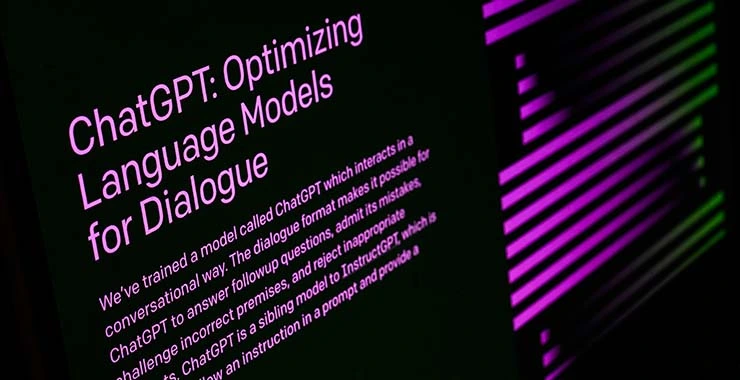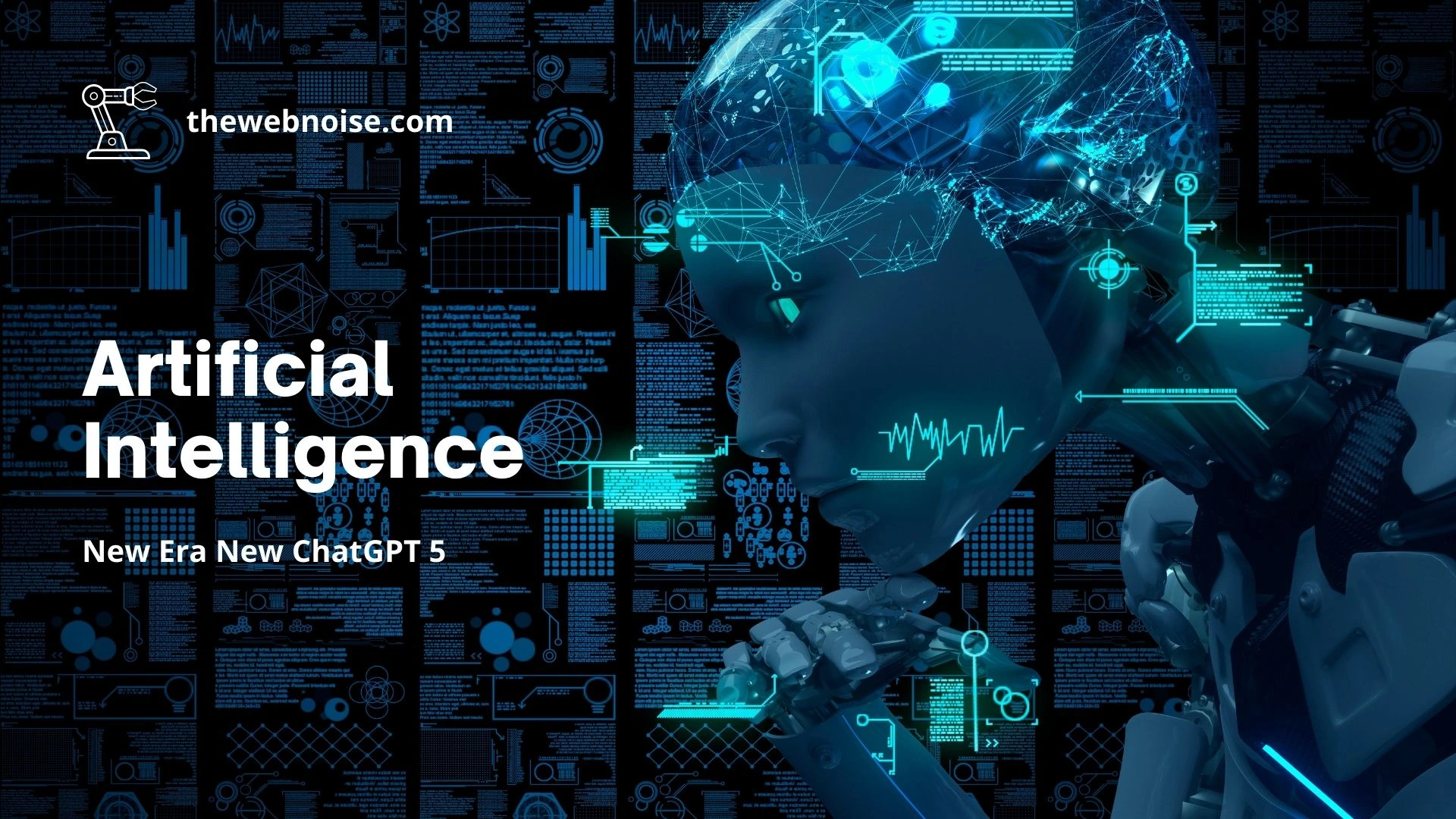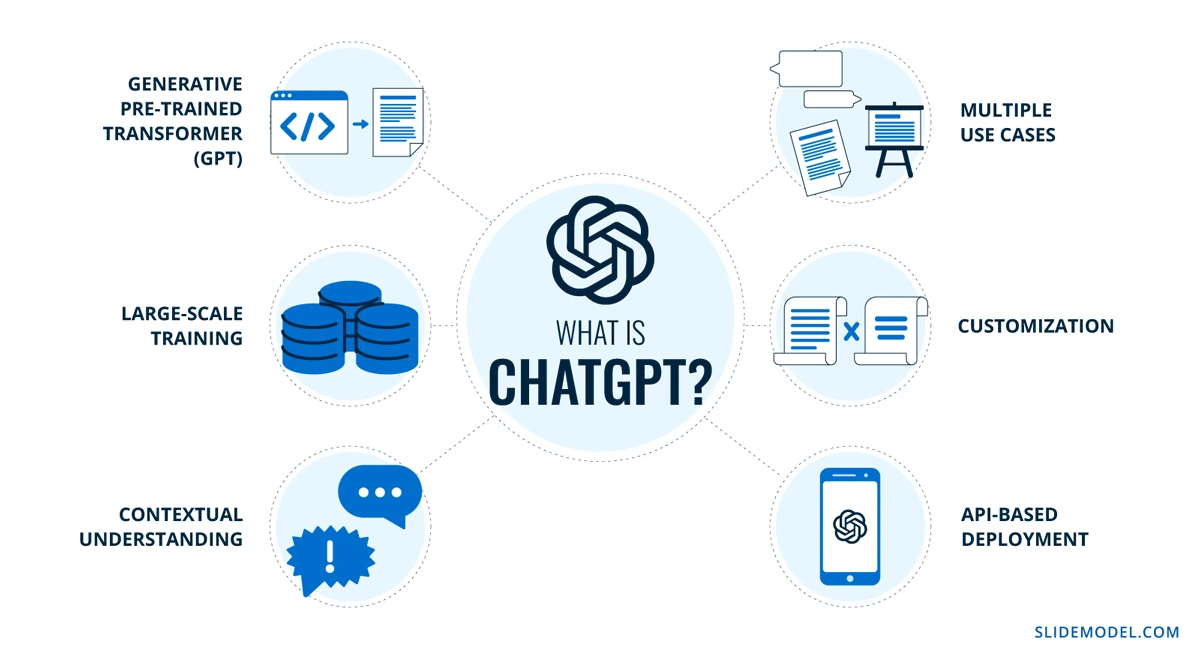ChatGPT 5 Release
The phrase “AI” has seen a significant increase in 2023, with corporations flexing their muscles and building technologies that seek basic language instructions from consumers and achieve something extraordinary instantaneously.
ChatGPT, the popular chat-based AI tool capable of human-like discussions, is at the core of this uproar.
ChatGPT’s current free version is based on OpenAI’s GPT-3.5, a large language model (LLM) that combines natural language processing (NLP) with machine learning.
Its November 2022 release created a whirlwind of speculation about AI’s ability to accelerate processes. In doing so, it also fueled fears about technology displacing humans or posing a long-term threat to humanity.
GPT-3.5 was replaced in March 2023 by GPT-4, which offered significant upgrades to the chatbot, including the ability to submit photos as prompts and enable third-party programs via plugins.
However, just months after the publication of GPT-4, AI aficionados have been expecting the release of the next version of the language model — GPT-5 — with high hopes for breakthroughs in its intelligence.

When will GPT-5 be available?

Based on recent releases, OpenAI may not deploy GPT-5 for several months. It might be further delayed as a result of the widespread alarm caused by AI tools like ChatGPT.
GPT-4 triggered several arguments about the ethical usage of AI and how it may harm humans. It was quickly followed by an open letter signed by hundreds of IT professionals, educators, and dignitaries, including Elon Musk and Steve Wozniak, requesting a halt to the training of systems “more advanced than GPT-4.”
Since then, OpenAI CEO Sam Altman has said, at least twice, that the company is not working on GPT-5. Altman stated in June 2023, during a press event arranged by The Economic Times in New Delhi, India, “We have a lot of work to do until GPT5.
It is time-consuming. We are not even close.” Altman had stated at an MIT event in April that OpenAI “won’t [work on GPT-5] for some time.”
“We are doing other things on top of GPT-4,” the CEO said, “that I think have all sorts of safety issues that are important to address.”
| Read Also – Managing Technology Innovation ” ChatGPT ” for a Better Future |
GPT-5 is expected to provide more power and better prices.
Notably, these bigger inquiries have a cost. While GPT-3.5 is available for free through ChatGPT, GPT-4 is exclusively available to ChatGPT Plus customers.
Pricing starts at $20 per month, which might be prohibitively expensive.With GPT-5, as processing needs and chatbot competency improve, cost may rise as well.
For the time being, you may utilize Microsoft’s Bing AI Chat, which is likewise built on GPT-4 and is completely free to use. However, you will be restricted to Microsoft’s Edge browser, where the AI chatbot will accompany you around the web as a “co-pilot.”
| Read Also – ChatGPT 5 IS THE NEXT BIG THING IN ARTIFICIAL INTELLIGENCE. |
Correct information and less hallucinations
GPT-5 is anticipated to be more factually correct, in addition to producing speedier answers.
We’ve seen multiple instances of ChatGPT, Bing AI Chat, or Google Bard spouting out pure nonsense — sometimes known as “hallucinations” in technical terminology.
This is due to the fact that these models are trained using restricted and out-of-date data sets.
For example, the free version of ChatGPT based on GPT-3.5 only includes information up to June 2021 and may give incorrect answers when questioned about events after that date.
GPT-4, on the other hand, was trained using a larger collection of data that still extends back to September 2021.
In informal talks, OpenAI noticed significant discrepancies between GPT-4 and GPT-3.5. GPT-4 also performed better on a variety of examinations, including the Unform Bar Exam, LSAT, AP Calculus, and others. Furthermore, it outperformed GPT-3.5 machine learning benchmark tests in 23 languages other than English.
GPT-4, according to OpenAI, had less hallucinations and scored 40% better than GPT-3.5 in “internal adversarial factuality evaluations.
” Furthermore, GPT-4 had an 82% reduced proclivity to reply to “sensitive requests” or “disallowed content” such as self-harm or medical enquiries.
Despite these shortcomings, GPT-4 demonstrates a variety of biases, but OpenAI claims that it is upgrading current systems to represent common human values and learn from human input and criticism.
Eliminating inaccurate GPT-5 responses will be important to its future acceptance, particularly in critical industries such as health and education.

Capabilities in several modes
GPT-4 is unaware of real-world events beyond September 2021, however it has recently been modified with the capacity to connect to the internet in beta through a specialized web-browsing plugin.
Microsoft’s Bing AI conversation, which is based on OpenAI’s GPT and was recently updated to GPT-4, already allows users to get information from the internet.
While this gives you access to more up-to-date data, you’re certain to get results from untrustworthy websites that rank high in search results using illegal SEO practices.

It has to be seen how these AI models counteract this and produce only accurate findings while remaining fast. This might be one of the areas where OpenAI’s forthcoming models, particularly GPT-5, can improve.
GPT-4, in addition to online search, may leverage photos as inputs for enhanced context.
This, however, is presently only available as a research preview and will be made available in the model’s sequential updates.
Future versions, particularly GPT-5, might be expected to have enhanced capabilities for processing data in multiple formats such as audio, video, and others.
Meta recently revealed ImageBind, a multimodal AI model that can interpret six distinct sources of data: text, picture, video, audio, depth, and heat maps.
One may anticipate OpenAI to make advances in this area by the time it releases GPT-5, making it more helpful in a variety of domains of work and not only as a chatbot or AI picture generator.
Concerns and expectations regarding Artificial General Intelligence
One significant disadvantage of existing big language models is that they must be trained using manually provided data.
Naturally, one of the most significant AI tipping moments will be when AI can comprehend information and learn like humans.
Artificial General Intelligence, or AGI, refers to this stage of independent human-like learning.
AGI, according to IBM, is the point at which computers “would have a self-aware consciousness that has the ability to solve problems, learn, and plan for the future.”
AGI is still a theoretical idea, with academics and AI stakeholders disagreeing on when it will arrive. However, the recent surge in ChatGPT popularity has fueled conjecture that GPT-5 is linked to AGI.
Auto-GPT tools provide a glimpse into the future when AGI is achieved. Auto-GPT is an open-source application that can conduct tasks automatically with minimum human input. It was first released on GPT-3.5 and then upgraded to GPT-4.
AGI is viewed as a threat to mankind since it allows machines to make their own judgments, as expressed in a blog published by Sam Altman in February 2023.
In the blog, Altman assesses the possible benefits of AGI against the chance of “grievous harm to the world.
” The CEO of OpenAI also advocates for worldwide norms on controlling, distributing, and sharing AI advantages.
While expecting GPT-5 to conceive AGI may be an exaggeration, especially in the next several years, the idea cannot be fully ruled out.

















